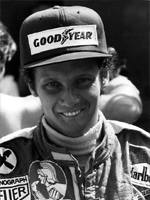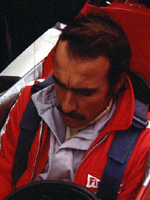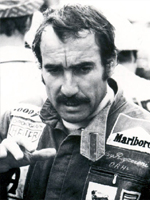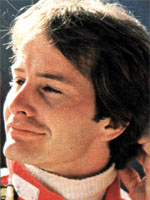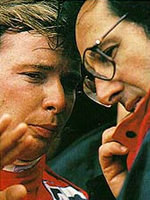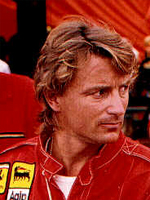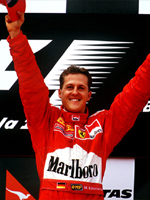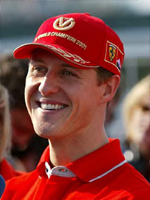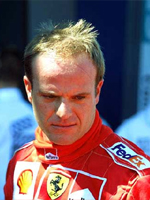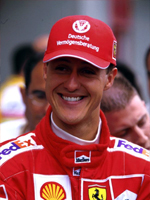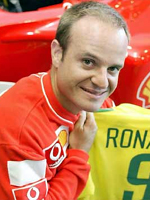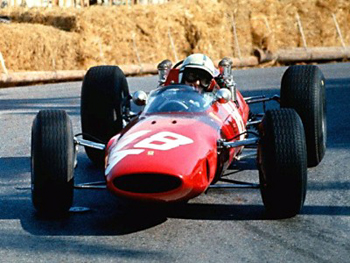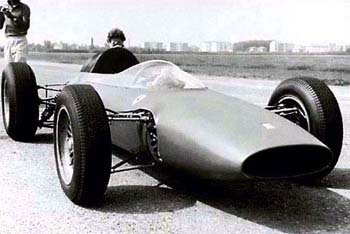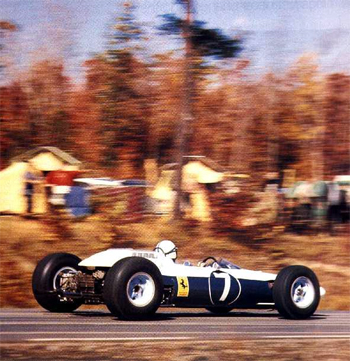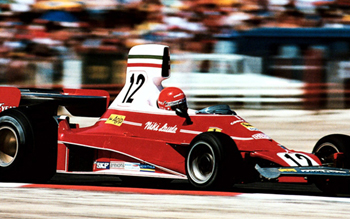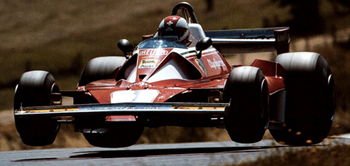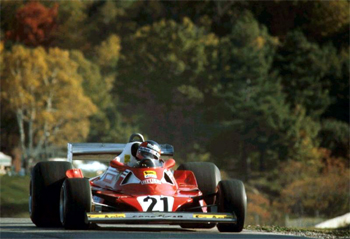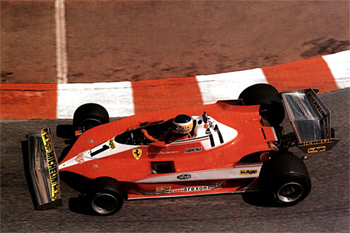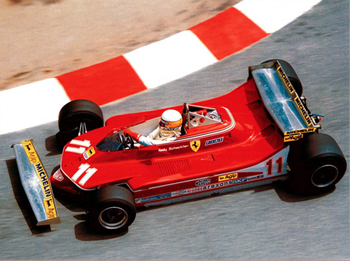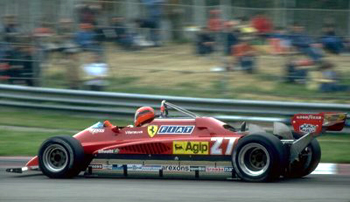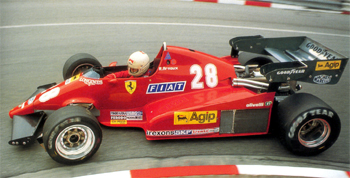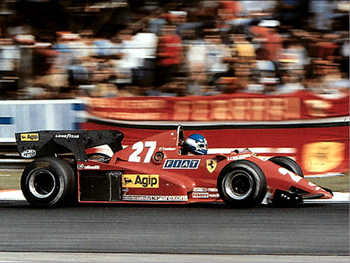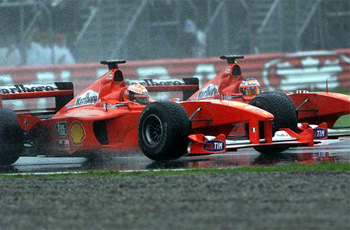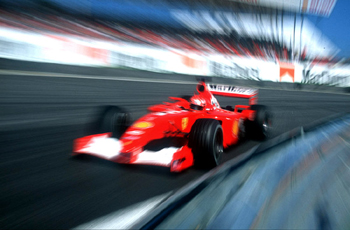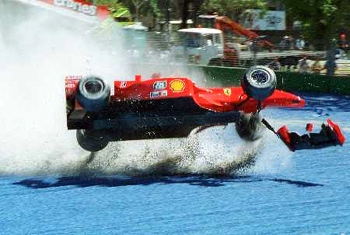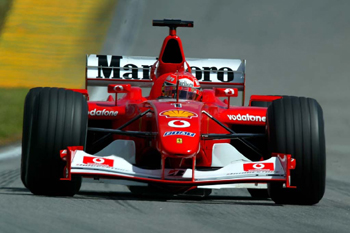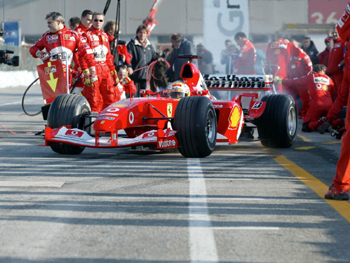18.08.2004 Ferrari recall the lead-up to their 14th constructors' championship - it was no easy matter
1961
 |
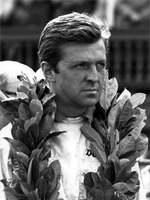 |
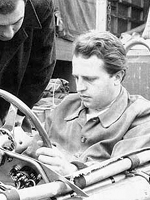 |
|
Phill Hill |
Wolfgang von Trips |
Giancarlo Baghetti |
1964
John
Surtees became the first and only driver ever to take the highest accolade on
two and four wheels. His success in
Formula 1 came thanks to the 158 F1, the car that marked Ferrari’s return to
8-cylinder engines. With help from his
team-mate Lozeno Bandini, Surtees won the title with just a one-point margin
over Graham Hill after the BRM driver retired in
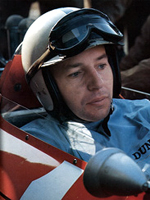 |
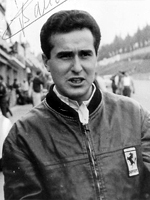 |
|
John Surtees |
Lorenzo Bandini |
1975
After
11 years, Ferrari was back on top, winning both the Drivers’ and
Constructors’ titles. Niki Lauda clocked
up five wins (
|
|
|
|
Niki Lauda |
'Clay' Regazzoni |
1976
The year started the way the previous year had finished, with Ferrari dominating (six wins in the first nine races). The 312 T2 proved itself to be a redoubtable successor to the previous version and gave Lauda the chance to build up an impressive championship lead. But a serious accident at the Nürburgring on the 1st of August ruined Lauda’s hopes of a second Championship title. The team decided not to take part in the Austrian GP and returned for the Dutch GP. Even though he had not completely recovered, Lauda made his return at Monza in an attempt at fighting off Hunt’s attack on his lead. The show-down came in Japan when Lauda retired due to the pouring rain, leaving Hunt to take the Championship. Ferrari’s consolation came with the Constructors’ title.
|
|
|
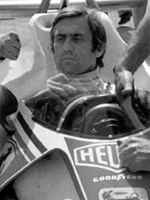 |
|
Niki Lauda |
'Clay' Regazzoni |
Carlos Reutemann |
1977
After
the misfortune of the previous year, Lauda reclaimed what should rightly have
been his, taking his second World Championship. Ferrari made it a hat-trick in
the Constructors’ Championship thanks
to an improved version of
the 312 T2. Ferrari won four of the season’s races – Carlos Reutemann, who
had made his debut at the end of the previous year, won the Brazilian GP, while
Lauda won the South African, German and Dutch GPs. Once he had secured the
title, Lauda left his car in the capable
 |
 |
 |
|
Niki Lauda |
Carlos Reutemann |
Gilles Villeneuve |
1979
Ferrari
returned to form, dominating both the Championship classifications. Villeneuve
and the South African Jody Scheckter were head and head in the Drivers’
rankings, winning three races apiece. Scheckter’s greater consistency made the
difference. The 312 T3 was used for the opening races, and the 312 T4 debuted in
|
|
|
|
Gilles Villeneuve |
Jody Scheckter |
1982
A terrible destiny prevented Ferrari from winning a Drivers’ title that was there for the taking. One of the most popular Ferrari drivers of all time, Gilles Villeneuve, lost his life during practicing for the Belgian GP at Zolder on 8th May. Less than three months later, Didier Pironi was seriously injured during the warm-up for the German GP and was unable to race for the rest of the season. The 126 C2 proved to be a particularly competitive car, a fact that ensured Ferrari would take the Constructors’ title thanks to the results of Patrick Tambay (who won at Hockenheim) and Mario Andretti.
|
|
|
|
Gilles Villeneuve |
Didier Pironi |
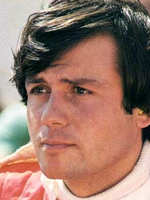 |
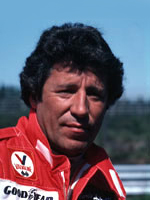 |
|
Patrick Tambay |
Mario Andretti |
1983
René
Arnoux came very close to taking the Drivers’ Championship and was among the
possible winners right up until the last race. Forced to retire early on in the
race at Kyalami, Arnoux was unable to battle out the final result with Nelson
Piquet. But thanks to his result and those of
his fellow countrymen, Patrick Tambay, Arnoux brought Ferrari’s second
consecutive Constructors’ title. The season’s wins were Imola (Tambay),
|
|
|
|
René Arnoux |
Patrick Tambay |
1999
After
16 years, Ferrari regained the Constructors’ title thanks to the combined efforts of
Michael Schumacher, Eddie Irvine and Mika Salo. Salo was called in by Ferrari to
drive six races in place of Schumacher after Michael was injured in an accident
at Silverstone. After winning Imola and
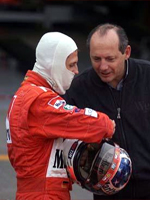 |
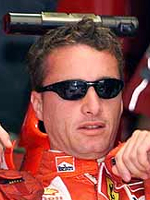 |
 |
|
Michael Schumacher |
Eddie Irvine |
Mika Salo |
2000
A
record year for Ferrari, in every sense. 170 points, 10 wins, 10 pole positions
and both Championship titles. After winning nine races, Michael Schumacher took
the Drivers’ title, the first Ferrari driver to do so after 21 long years.
With the vital support of Rubens Barrichello, who replaced Eddie Irvine, the
team took the Constructors’ title for the second year running after a season
full of suspense. Schumacher took a hat-trick of wins (
|
|
|
|
Michael Schumacher |
Rubens Barrichello |
2001
The
confirmation year. Schumacher and Ferrari claim the Drivers’ and
Constructors’ titles, two months before the end of the season, with a
magnificent double (Schumacher first; Barrichello second) at the Hungaroring
circuit. The season is, without a doubt, an extraordinary one: 9 wins (
|
|
|
|
Michael Schumacher |
Rubens Barrichello |
2002
Another
record year: as early as the French Grand Prix Schumacher continued his fifth
World Drivers’ title, his third in succession. The Constructors’ title was
won, by Ferrari, at the Hungarian Grand Prix – as it had been in 2001.
The
figures speak for themselves: 15 out of 17 races in the calendar won, 11 for
Schumacher (Australia,
|
|
|
|
Michael Schumacher |
Rubens Barrichello |
2003
The
regulations may have c
 |
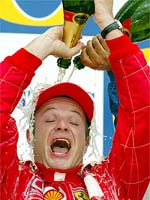 |
|
Michael Schumacher |
Rubens Barrichello |
Text: Ferrari SpA and Italiaspeed
|
|
|
|
|
|
|
|
|
|
|
|
|
|
|
|
|
|
|
|
|
|
|
|
|
|
|
|
|
|
|
|
|
|
|
|
|
|
|
|
|
|
|
|
|
|
|
|
|
|
|
|
|
|
|
|
|
|
|
|
|
|
|
|
|
|
|
|
|
